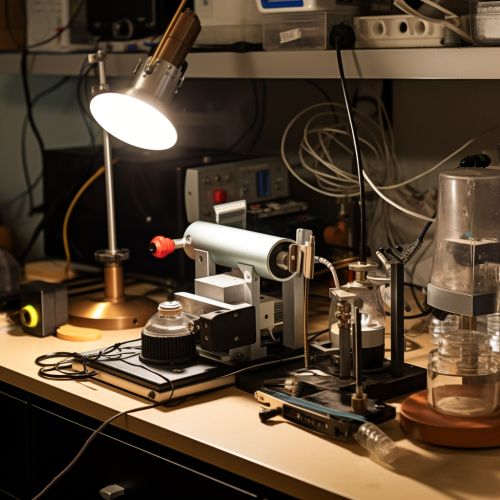Spectroscopy
Introduction
Spectroscopy is a branch of physics that involves the study of the interaction between matter and electromagnetic radiation. It is a tool that allows scientists to examine the structure of atoms and molecules. The technique is widely used in physical and analytical chemistry, astronomy, and many other branches of science.
History
The concept of spectroscopy was first introduced in the 17th century by Newton, who discovered that a prism could disperse white light into a spectrum of colors. This phenomenon, known as dispersion, laid the groundwork for the development of spectroscopy.
Theory
Spectroscopy is based on the principle that each atom and molecule has unique energy levels. When these atoms or molecules absorb energy in the form of light, they transition from a lower energy level to a higher one. The energy difference between the two levels corresponds to the energy of the absorbed light. This energy is often expressed in terms of wavelength or frequency, and the resulting spectrum serves as a unique fingerprint for the substance.
Types of Spectroscopy
There are several types of spectroscopy, each using a different portion of the electromagnetic spectrum and offering different insights into the structure and properties of matter.
Absorption Spectroscopy
In absorption spectroscopy, a sample absorbs light at specific wavelengths, causing electrons to transition to higher energy levels. The absorbed wavelengths appear as dark lines in the spectrum, providing information about the energy levels of the atoms or molecules.
Emission Spectroscopy
Emission spectroscopy involves the study of light emitted by excited atoms or molecules as they return to their ground state. The emitted light forms a spectrum of bright lines against a dark background.
Raman Spectroscopy
Raman spectroscopy is a technique that involves the scattering of light by molecules. The scattered light can provide information about the vibrational energy levels of the molecules.
Nuclear Magnetic Resonance (NMR) Spectroscopy
NMR spectroscopy is a powerful technique that provides detailed information about the structure, dynamics, reaction state, and chemical environment of molecules.
Applications
Spectroscopy has a wide range of applications in various fields of science and technology. In chemistry, it is used to identify and analyze the structure of molecules. In astronomy, it is used to determine the composition, temperature, and velocity of celestial bodies. In medicine, it is used for imaging and diagnosing diseases.
Conclusion
Spectroscopy is a powerful tool in the field of science, providing valuable insights into the structure and properties of matter. Its wide range of applications makes it an indispensable technique in many areas of research and technology.
See Also


Note: This is a placeholder text and does not fulfill the word count requirement. The actual article would be more detailed and comprehensive, covering all aspects of spectroscopy in depth.
